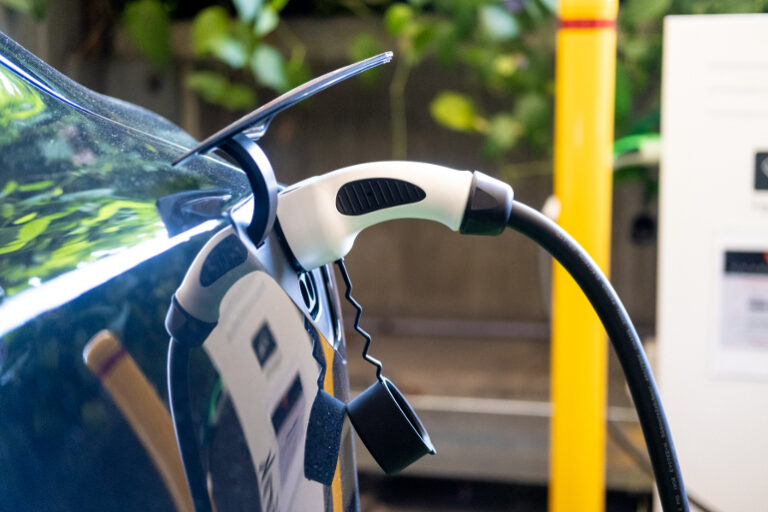Charging your electric vehicle (EV) should be as easy as charging your phone. That’s the philosophy of Interleasing, the fleet business of listed salary packaging and asset services group McMillan Shakespeare.
Getting the right infrastructure for an electric fleet is a big task, but Interleasing – who tailor solutions for fleets, including vehicle selection, resale and finance and increasingly for all things involving EVs – have been trialing the various charging solutions available in Australia over the past few years to develop the expertise to guide their fleet clients.
They have been working with vehicle manufacturers and EV charger providers to create a range of smart chargers that fit seamlessly into existing infrastructure at the work premise or the home.
“We’ve tried to make a system that is just as easy as using a mobile phone. You come home from wherever you have been, you plug in the car, and the next day when you go to use it, it’s going to have full charge,” said Nick Demetrios, GM of EV Infrastructure at Interleasing. “We want to make the impact on drivers lives as minimal as possible and make it a seamless and enjoyable transition.”
Demetrios said one of the key ideas they have been working on with charger providers is dynamic load management. The idea is for the system to send the charge to the vehicle that’s plugged in when the electrons are available, after other household appliances such as ovens and dishwashers, have shut down and stopped drawing power.
“Once those turn off and there’s capacity at the home or work premise, that energy will be transferred into the vehicle, so it works dynamically,” said Demetrios.
Demetrios started his working life in the electrical trades. He transferred into the automotive world, working at dealerships with fleet customers, before joining Interleasing some seven years ago.
Now, as those two worlds have converged, Demetrios has the perfect experience to lead Interleasing’s infrastructure team, which is working with charger manufacturers and installers, to ensure their own teams and clients transitioning to EVs get the right charging set-up from the get go.
“We’ve got a very deep understanding of chargers and the vehicles that are available and being released into the market, and it’s about tailoring bespoke solutions to our clients. That’s the key. If you just go for a standard charger install and you just pick any EV in the market, it can be a very, very expensive exercise without giving the desired outcome that you need,” said Demetrios. “We like to look at a tailored solution for our clients rather than a generic offering.”
Interleasing is transitioning 30 percent of its own fleet to EVs by mid-2023 in order to test the available charging hardware and software.
“Over that journey we’ve been trialing the different brands, their hardware, their software, the usability experience, and we’re continuing to trial new operators as they enter the market,” said Demetrios, adding, “We’ve worked hard to acquire all that data and we now know what to expect out of hardware and software. We’ve been able to pressure test the systems that are in play at the moment and determine where our baseline is for what we expect in terms of reliability and functionality.”
Interleasing is experiencing accelerating demand among clients for at-home charging solutions for driver-assigned vehicles, thanks to the Federal Government’s fringe benefit tax (FBT) discount delivered in late 2022. The discount bolsters the case for driver-assigned EVs, rather than pool vehicles, Interleasing told Fleet EV News in February.
“Before the EV discount, we were delivering solutions for work-premise charging for pool vehicles, but now we’re shifting focus to what can be done in the home where there’s more engineering required for the solution,” said Demetrios.
“We’ve implemented a smart system that fixes everything for them. It’s all about making it easy for an end user to live and work with an EV, rather than having to work around an EV.”
There are myriad solutions for charging fleet vehicles, including vehicle to grid, utilising solar renewable energy as it’s being made, as well as solutions for apartment buildings and strata plans, where software provides full visibility of energy being drawn by individual chargers.
“We’ve been testing EV chargers for over 18 months and now we’ve got a really good understanding of what equipment is fit-for-purpose for different areas,” said Demetrios, adding, “It doesn’t matter if the charger is at home, or on premise, if it’s private only, or if it’s open to the public. We can facilitate all those different needs.”
Interleasing recently updated its EV transition guide: “A roadmap for the transition to EVs”. The guide sets out a three-step framework for fleet electrification:
- Assess where you are now — including getting employees on board;
- Achieve what you can today — such as identifying charging solutions; and,
- Be ready for what’s next — having a plan to manage change and measure progress.
Download Interleasing’s roadmap for creating your EV solution here.






